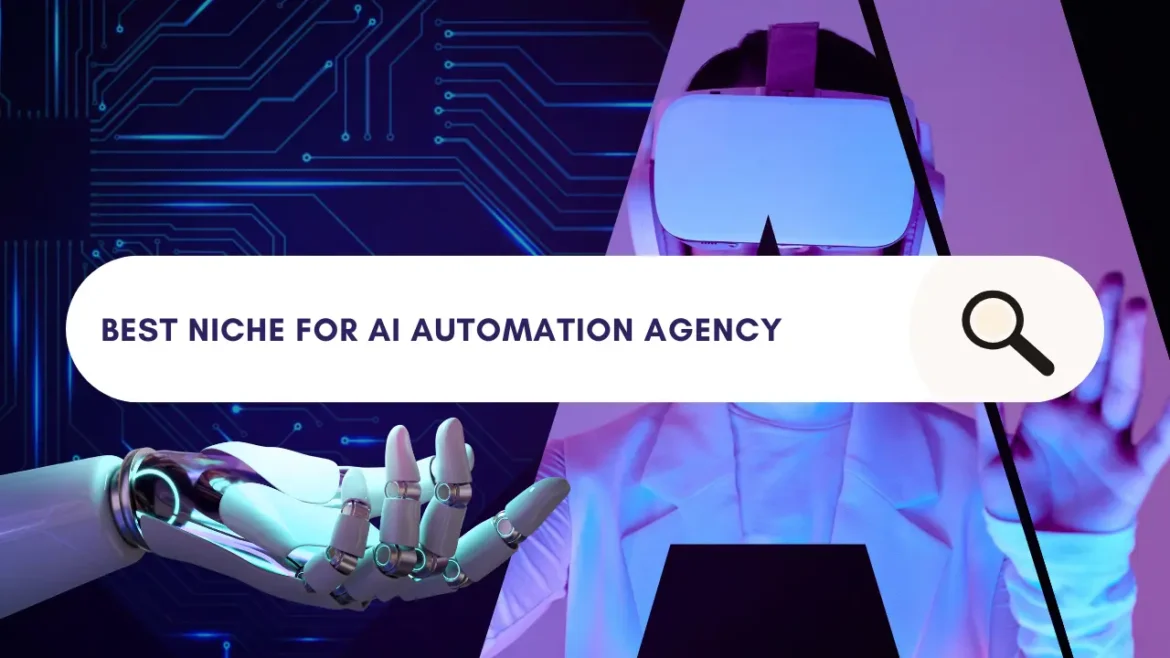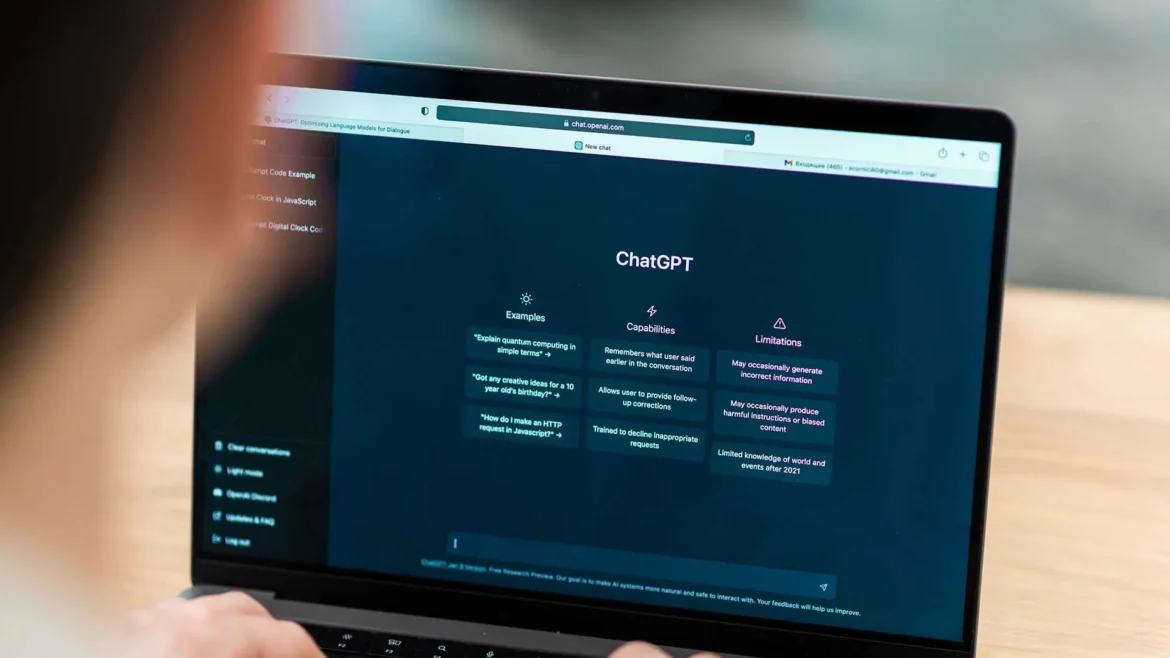How to Make Money with AI: A Comprehensive Guide
https://exploreaitools.com/wp-content/uploads/2024/06/A-person-is-checking-How-To-Make-Money-With-AI-1024x683.webp 1024 683 Explore AI Tools Explore AI Tools https://exploreaitools.com/wp-content/uploads/2024/06/A-person-is-checking-How-To-Make-Money-With-AI-1024x683.webpIf you’re wondering how to make money with AI, you’re not alone. Many individuals and businesses are exploring innovative ways to leverage AI to generate income. This comprehensive guide will explore various strategies, step-by-step processes, and potential earnings for making money with AI.
Artificial Intelligence is no longer just a concept confined to sci-fi novels. It has become a practical tool that can be harnessed for financial gain. From automating mundane tasks to predicting market trends, AI offers a plethora of opportunities. Whether you’re a tech-savvy entrepreneur, a freelancer, or someone looking to supplement their income, AI can be a valuable ally. This article will delve into how to use AI to make money, covering numerous methods and providing actionable steps to get started.
Who Can Make Money Using AI?
Before diving into the specific methods, it’s essential to understand who can benefit from AI-driven income opportunities. The answer is almost anyone. However, the level of expertise required and the potential earnings can vary significantly based on the chosen method.
1. Entrepreneurs and Startups
Entrepreneurs can develop AI-driven products or services that address specific market needs. Startups often have the flexibility to innovate and experiment with cutting-edge technologies.
2. Freelancers and Consultants
Freelancers with expertise in AI can offer their services to businesses looking to implement AI solutions. Consultants can guide companies through the integration of AI into their existing processes.
3. Small and Medium Businesses (SMBs)
SMBs can utilize AI tools to enhance their operations, improve customer service, and increase efficiency, leading to cost savings and increased revenue.
4. Tech Enthusiasts and Hobbyists
Individuals with a passion for technology can explore various AI applications, from developing personal projects to creating content that educates others about AI.
5. Educators and Content Creators
Educators can create courses and tutorials about AI, while content creators can produce blogs, videos, and podcasts discussing AI trends and tools.
Ways to Make Money with AI
There are numerous ways to make money with AI. Here are some of the most promising methods, along with step-by-step processes for each.
1. Developing AI-Powered Products
Creating AI-powered products is one of the most lucrative ways to make money with AI. These products can range from software applications to hardware devices that utilize AI for various functions.
Step-by-Step Process:
- Identify a Market Need: Research and identify a problem that can be solved with AI. This could be anything from automating customer service to enhancing data analysis.
- Develop a Business Plan: Outline your product idea, target market, revenue model, and go-to-market strategy.
- Build a Prototype: Develop a minimum viable product (MVP) that demonstrates the core functionality of your AI-powered product.
- Gather Feedback: Test the prototype with a small group of users and gather feedback to refine the product.
- Secure Funding: If necessary, seek funding through investors, crowdfunding, or grants to scale your product development.
- Launch and Market Your Product: Once your product is ready, launch it to the market and implement a marketing strategy to attract customers.
Potential Earnings:
The earnings from AI-powered products can vary widely. Successful products can generate millions of dollars in revenue, especially if they address a significant market need and have a scalable business model.
2. Offering AI Consulting Services
Businesses across various industries are eager to integrate AI into their operations but often lack the expertise to do so. Offering AI consulting services is a way to capitalize on this demand.
Step-by-Step Process:
- Build Expertise: Gain a deep understanding of AI technologies and their applications. This may involve formal education, self-study, or hands-on experience.
- Define Your Services: Determine the specific consulting services you will offer, such as AI strategy development, implementation support, or training.
- Create a Portfolio: Develop case studies or examples of your work to showcase your expertise and the value you can provide to clients.
- Market Your Services: Use online platforms, networking events, and professional associations to promote your consulting services.
- Engage with Clients: Work closely with clients to understand their needs and provide tailored AI solutions that drive results.
Potential Earnings:
AI consultants can charge hourly rates ranging from $100 to $500 or more, depending on their expertise and the complexity of the projects. Annual earnings can reach six figures or higher for successful consultants.
3. Developing AI-Driven Applications
Creating applications that leverage AI can be a profitable venture. These applications can range from mobile apps to enterprise software that utilizes AI for various functionalities.
Step-by-Step Process:
- Identify a Niche: Research the market to find a niche where AI-driven applications can provide significant value.
- Choose the Right Tools: Select the appropriate AI tools and frameworks for developing your application, such as TensorFlow, PyTorch, or OpenAI.
- Develop the Application: Build the core features of your application, ensuring that AI is integrated seamlessly to enhance its functionality.
- Test Thoroughly: Conduct extensive testing to ensure that your application works correctly and delivers the desired outcomes.
- Launch and Promote: Release your application on relevant platforms (e.g., App Store, Google Play) and implement a marketing strategy to attract users.
Potential Earnings:
AI-driven applications can generate substantial revenue through sales, subscriptions, or in-app purchases. The potential earnings depend on the application’s popularity and market demand.
4. Creating AI-Enhanced Content
AI can be used to create high-quality content, such as articles, videos, and music. Content creators can leverage AI tools to enhance their productivity and produce engaging content more efficiently.
Step-by-Step Process:
- Select AI Tools: Choose AI tools that can assist in content creation, such as content generators, video editors, or music composition software.
- Generate Ideas: Use AI to brainstorm content ideas based on trending topics and audience preferences.
- Create Content: Utilize AI tools to create or enhance content, ensuring it meets high-quality standards and is engaging for your audience.
- Optimize for SEO: Use AI-driven SEO tools to optimize your content for search engines and increase its visibility.
- Monetize Your Content: Explore various monetization options, such as ad revenue, sponsorships, affiliate marketing, or selling premium content.
Potential Earnings:
Content creators can earn money through various channels, including ad revenue, sponsorships, and sales of premium content. Successful creators can earn a substantial income, ranging from hundreds to thousands of dollars per month.
5. Building and Selling AI Models
If you have expertise in machine learning and data science, you can build and sell AI models tailored to specific industry needs. Companies often seek pre-built models to save time and resources.
Step-by-Step Process:
- Identify a Use Case: Research and identify a specific use case where an AI model can provide significant value, such as predictive analytics, image recognition, or natural language processing.
- Gather Data: Collect and preprocess data relevant to the chosen use case to train your AI model.
- Develop the Model: Build and train the AI model using appropriate algorithms and techniques.
- Validate the Model: Test the model to ensure it performs accurately and reliably in real-world scenarios.
- Market and Sell: Promote your AI model to potential buyers, such as businesses and developers, through online marketplaces or direct sales.
Potential Earnings:
The earnings from selling AI models can vary based on their complexity and demand. High-quality models can be sold for thousands of dollars, and successful developers can generate significant income from recurring sales.
6. Providing AI-Powered Services
AI can be used to enhance various services, such as customer support, marketing, and data analysis. Offering AI-powered services can be a profitable business model. You can also start an AI automation Service Agency; here is the guide on How to start AI Automation Agency
Step-by-Step Process:
- Identify a Service: Determine the specific service you want to offer that can be enhanced with AI, such as chatbots for customer support or AI-driven marketing campaigns.
- Develop AI Capabilities: Build or integrate AI capabilities into your service to improve its efficiency and effectiveness.
- Create a Business Model: Define your pricing strategy and service offerings, ensuring they provide value to your target audience.
- Promote Your Services: Use online marketing, networking, and referrals to attract clients who can benefit from your AI-powered services.
- Deliver Exceptional Results: Focus on delivering high-quality services that exceed client expectations and drive results.
Potential Earnings:
AI-powered service providers can charge premium rates for their enhanced offerings. Earnings depend on the scope and complexity of the services, with potential annual incomes reaching six figures.
7. Participating in AI Competitions
AI competitions, such as those hosted by Kaggle, offer cash prizes for developing high-performing AI models. Participating in these competitions can be both financially rewarding and intellectually stimulating.
Step-by-Step Process:
- Join a Platform: Sign up for a platform that hosts AI competitions, such as Kaggle.
- Select a Competition: Choose a competition that aligns with your skills and interests.
- Develop Your Model: Build and train an AI model to address the competition’s challenge, using the provided data and guidelines.
- Submit Your Entry: Submit your model for evaluation and track its performance on the leaderboard.
- Improve and Iterate: Continuously refine your model based on feedback and competition standings to increase your chances of winning.
Potential Earnings:
AI competitions can offer substantial cash prizes, ranging from a few hundred to several thousand dollars for top entries. Consistent participation and success can lead to significant cumulative earnings.
8. Teaching AI Courses
If you have expertise in AI, teaching online courses can be a lucrative way to share your knowledge and earn money. Platforms like Udemy, Coursera, and Teachable make it easy to reach a global audience.
Step-by-Step Process:
- Define Your Course: Choose a specific topic or area of AI to teach, ensuring it is in demand and matches your expertise.
- Create Course Content: Develop comprehensive course materials, including video lectures, quizzes, and assignments.
- Choose a Platform: Select an online learning platform to host your course, such as Udemy or Coursera.
- Market Your Course: Use social media, email marketing, and other promotional strategies to attract students to your course.
- Engage with Students: Provide ongoing support and engagement to ensure a positive learning experience and gather feedback for future improvements.
Potential Earnings:
Online instructors can earn money through course sales, with earnings ranging from hundreds to thousands of dollars per course. Popular courses with high enrollments can generate substantial income.
9. Developing AI-Based SaaS Products
Software as a Service (SaaS) products that leverage AI can solve specific business problems and offer recurring revenue opportunities.
Step-by-Step Process:
- Identify a Problem: Find a common business problem that can be addressed with an AI-driven SaaS solution.
- Develop the Product: Build a scalable SaaS product that incorporates AI to solve the identified problem effectively.
- Test and Validate: Conduct thorough testing to ensure the product works seamlessly and meets user needs.
- Launch and Market: Release the product and implement a marketing strategy to attract subscribers.
- Provide Ongoing Support: Offer continuous support and updates to maintain customer satisfaction and retention.
Potential Earnings:
SaaS products often generate recurring revenue through subscription models. Successful AI-driven SaaS products can generate substantial monthly income, depending on the number of subscribers and pricing tiers.
10. Investing in AI Startups
Investing in AI startups can be a profitable venture if you have the capital and risk appetite. As AI continues to grow, many startups in this space are poised for success.
Step-by-Step Process:
- Research and Identify Startups: Conduct thorough research to identify promising AI startups with innovative solutions and strong growth potential.
- Evaluate Potential Investments: Assess the startups’ business models, market opportunities, and management teams to determine their investment viability.
- Provide Capital: Invest in selected startups, either directly or through venture capital funds specializing in AI.
- Monitor and Support: Keep track of your investments’ progress and provide support or guidance as needed to help them succeed.
- Realize Returns: Depending on the investment structure, realize returns through exits such as acquisitions, IPOs, or secondary sales.
Potential Earnings:
Investing in AI startups can yield high returns, especially if the startups achieve significant growth and success. However, it also carries risks, and potential earnings vary widely.
Conclusion
The potential to make money with AI is vast and varied. Whether you’re developing AI-powered products, offering consulting services, creating AI-driven content, or participating in competitions, there are numerous ways to capitalize on the power of AI. By understanding the market needs, building expertise, and leveraging AI tools, anyone can find a niche that aligns with their skills and interests. As AI continues to evolve, the opportunities to generate income will only expand, making it an exciting time to explore how to use AI to make money.



